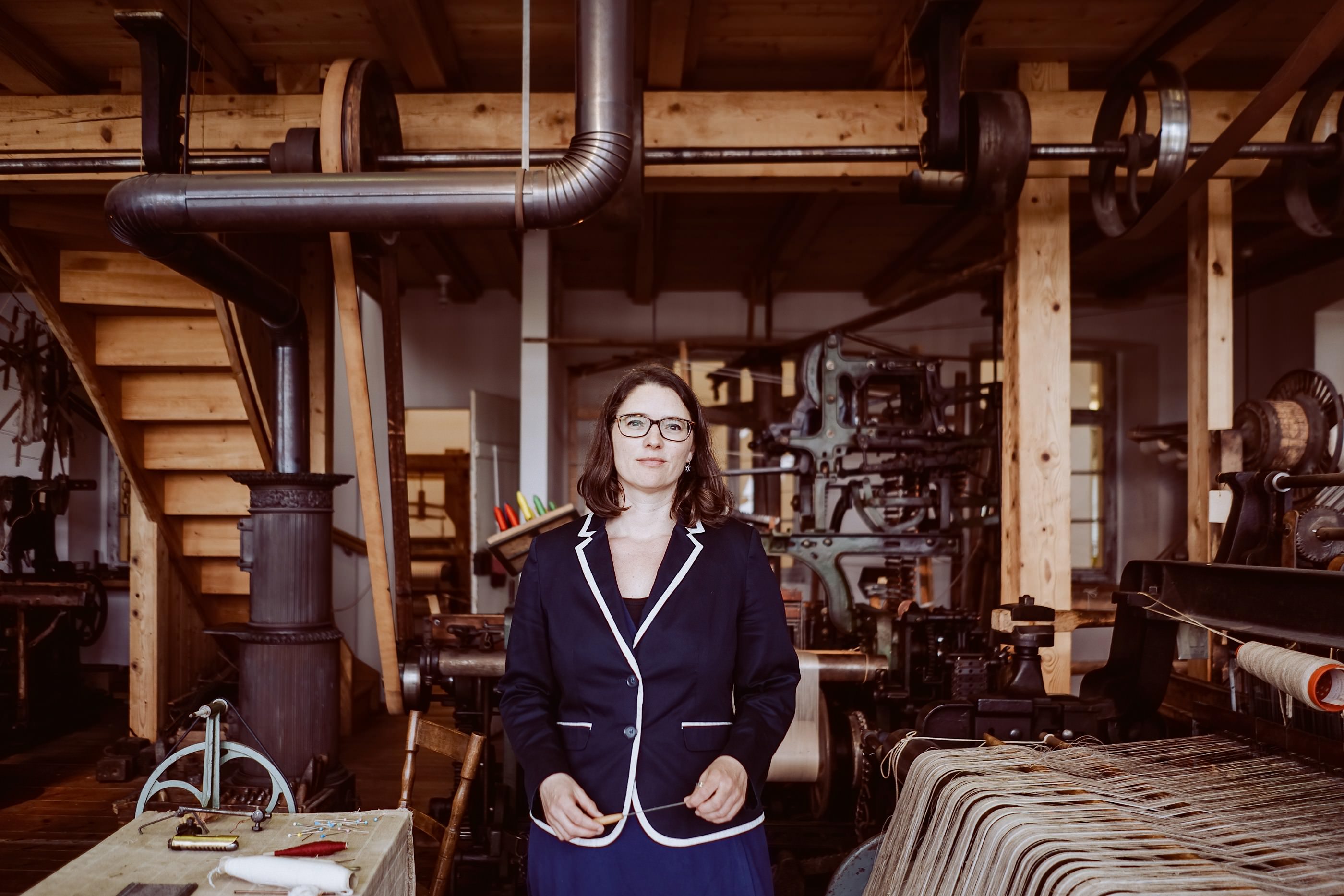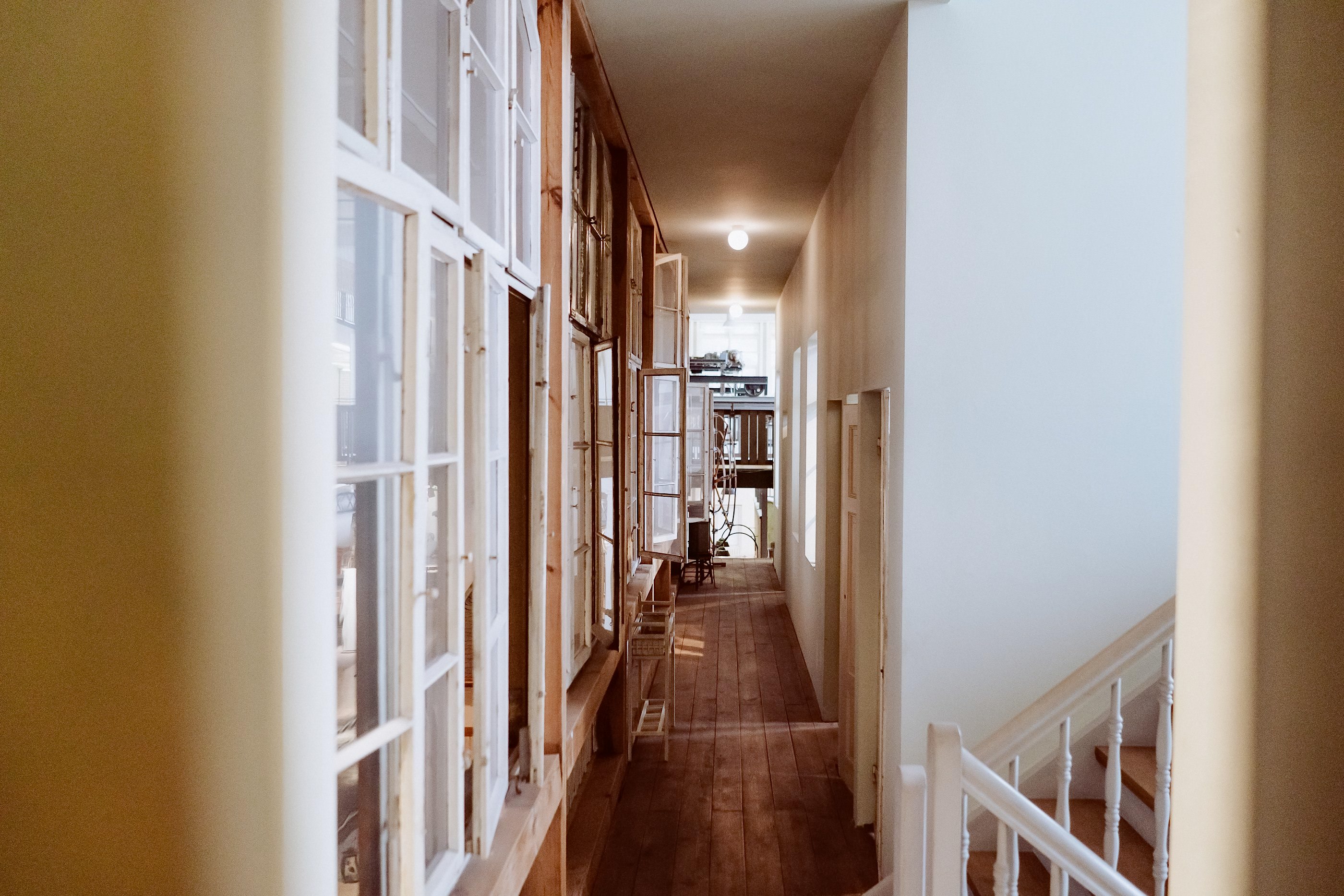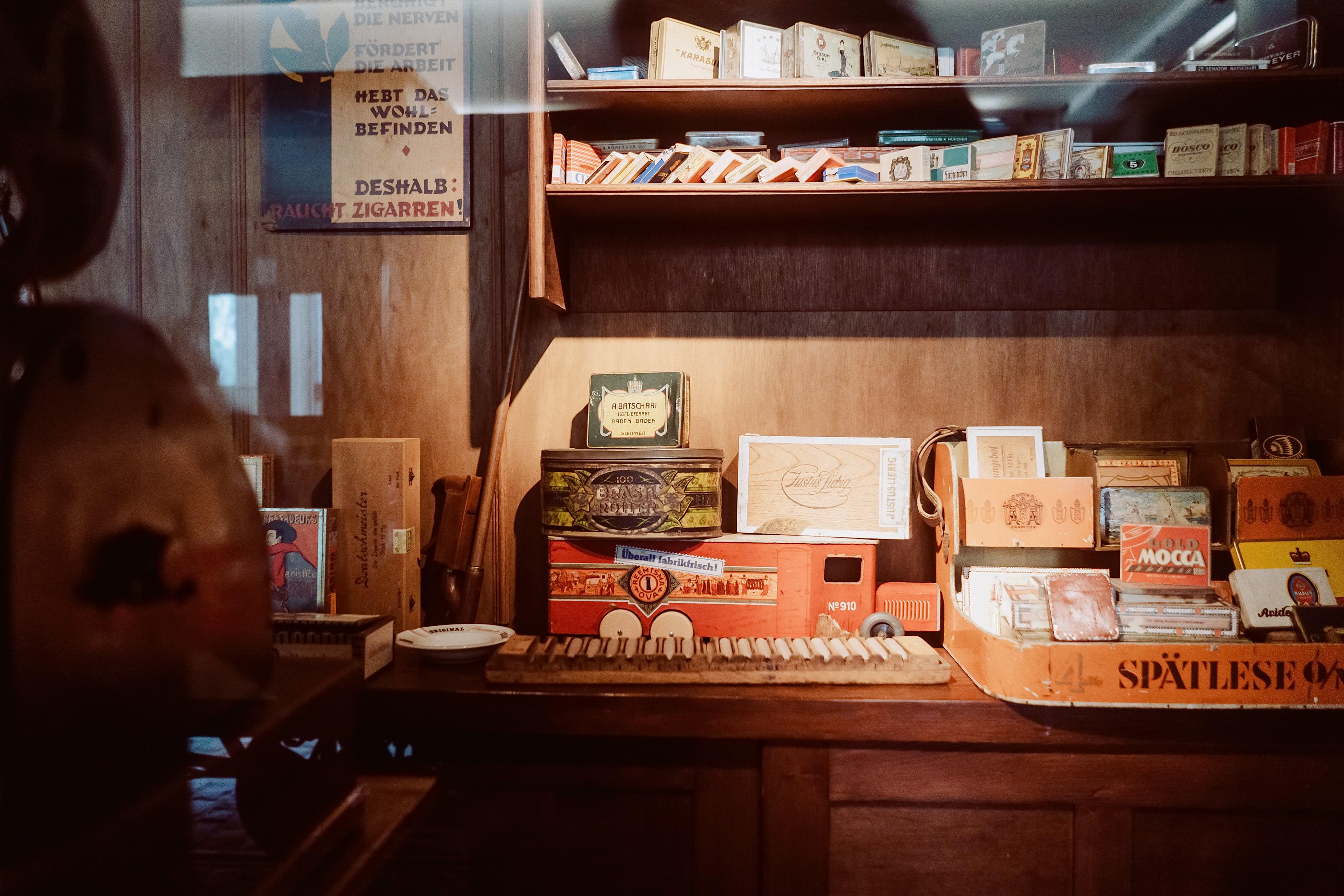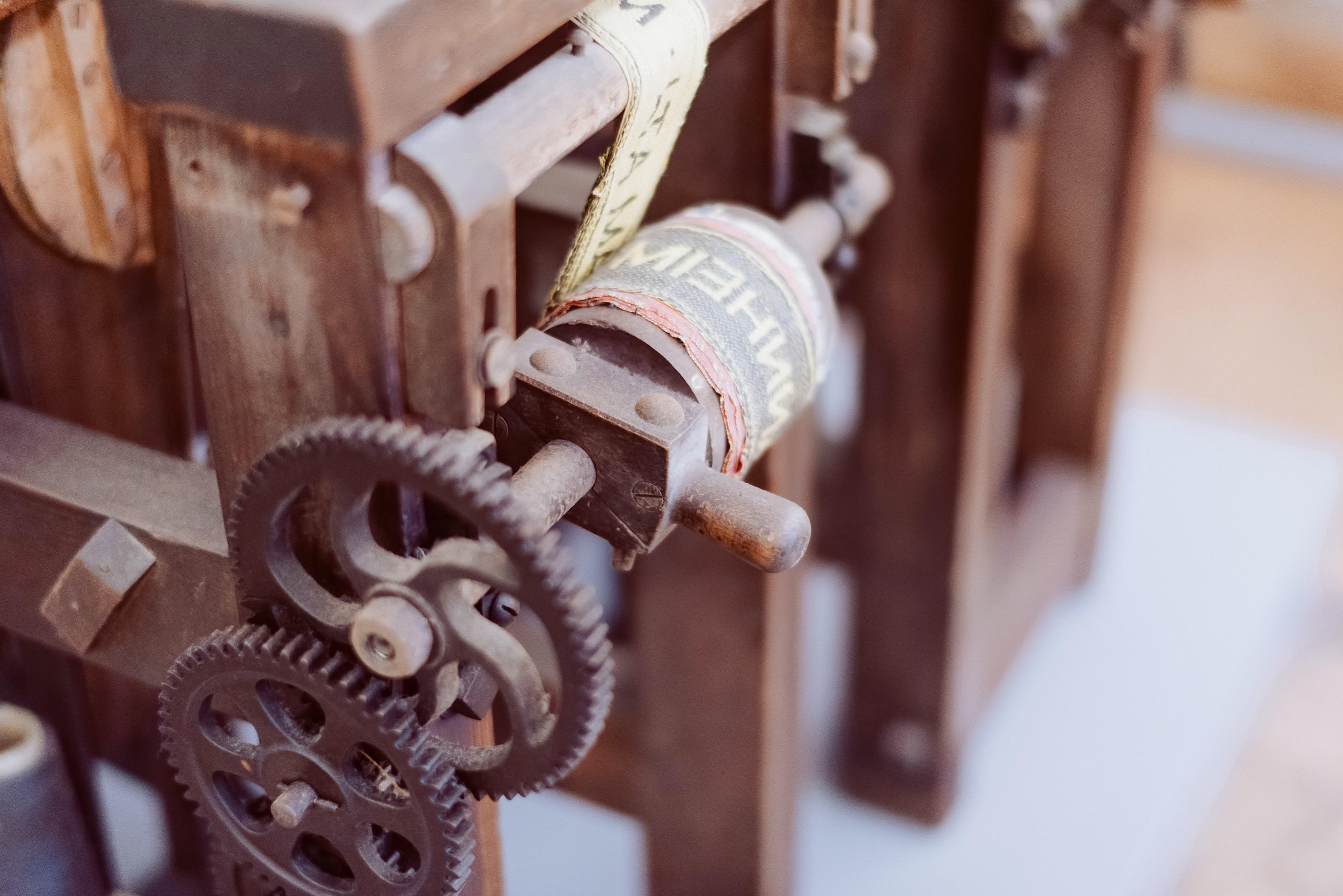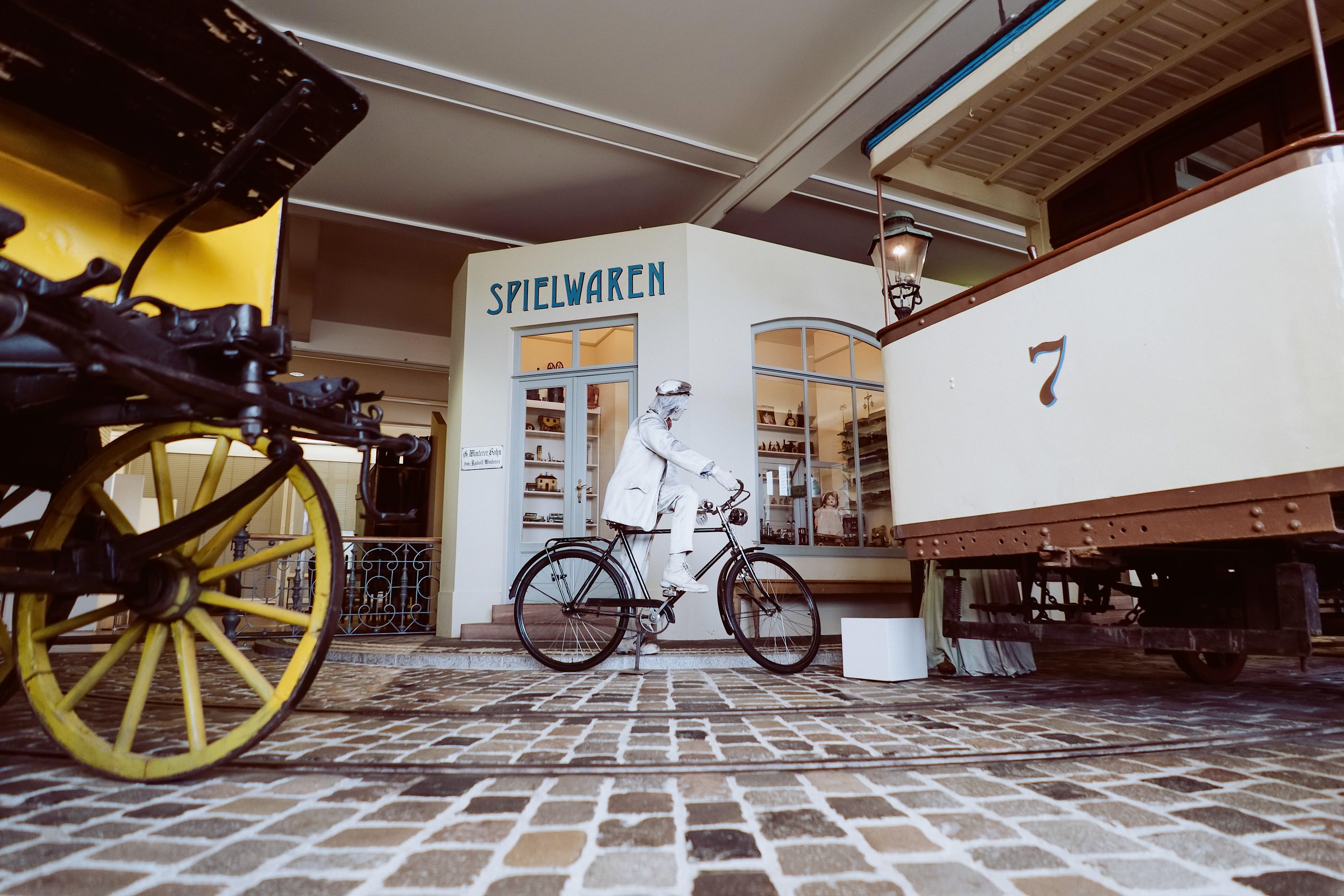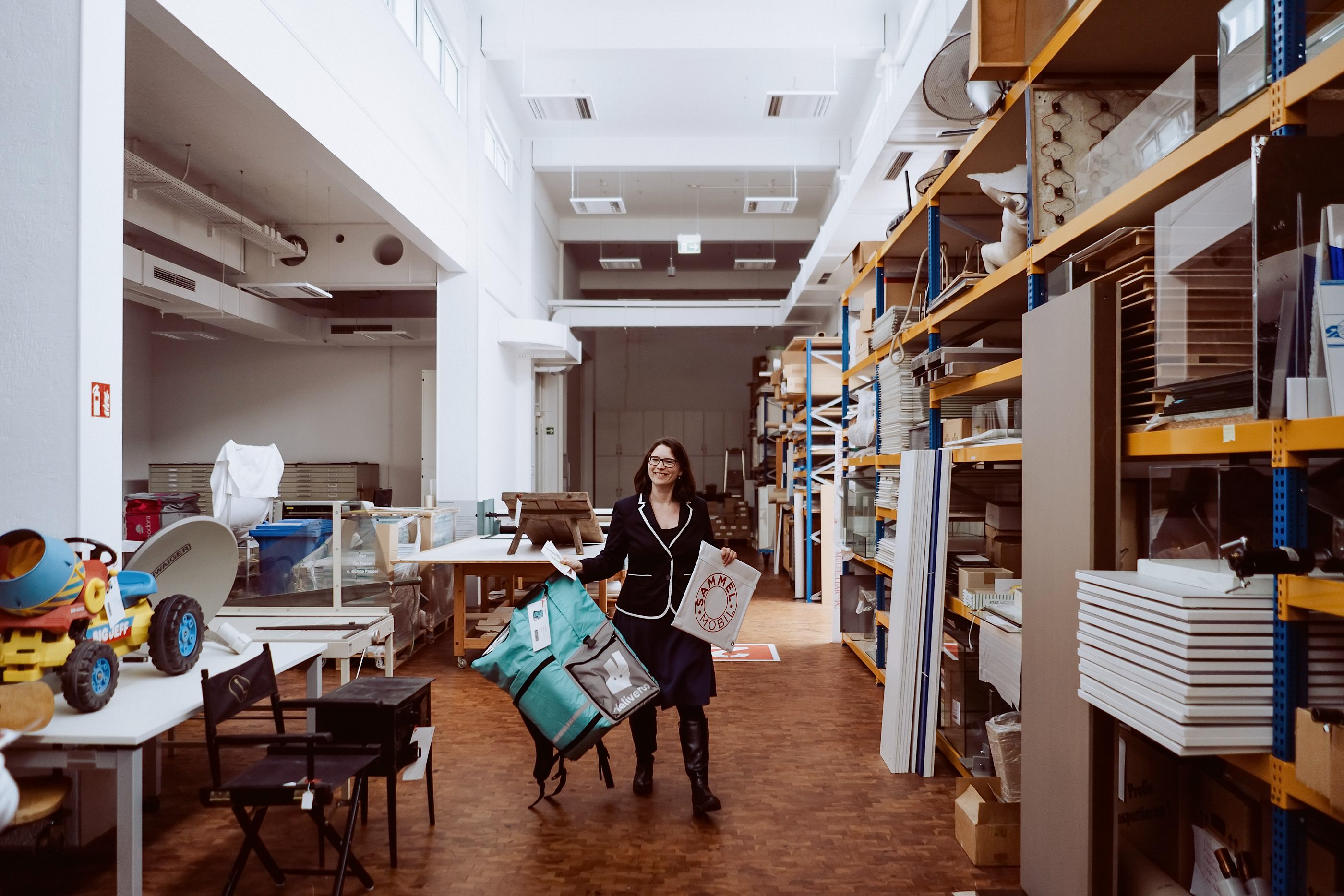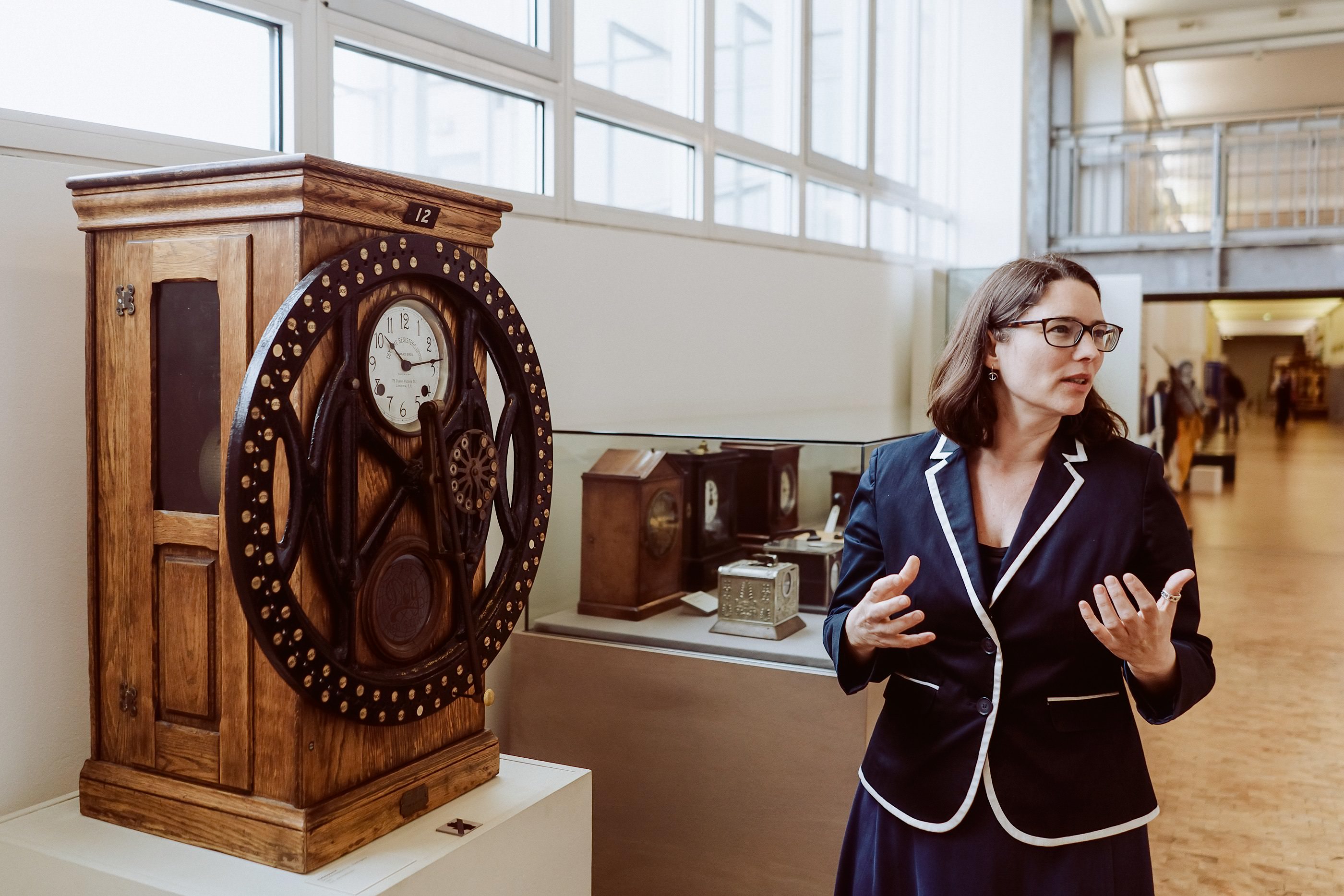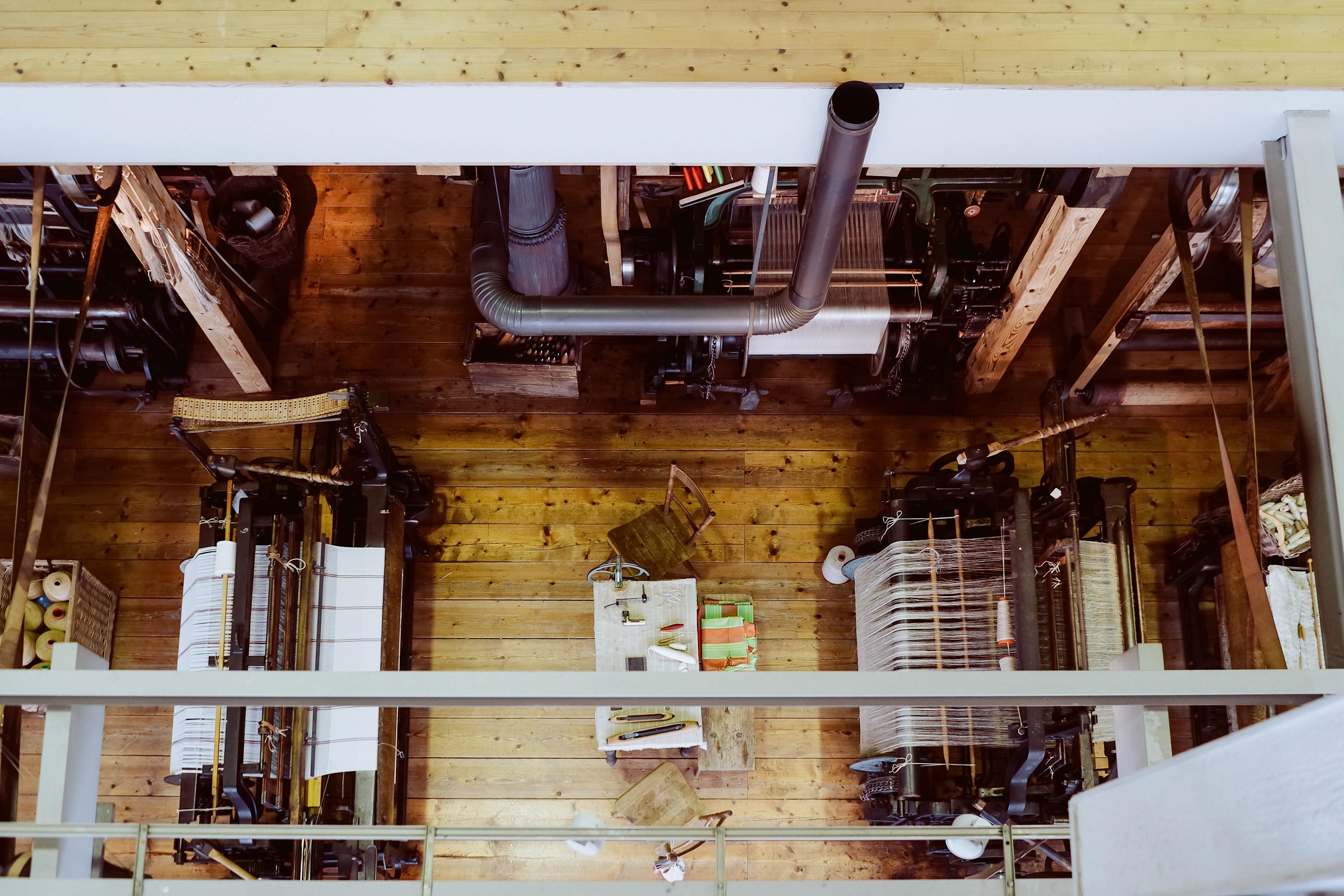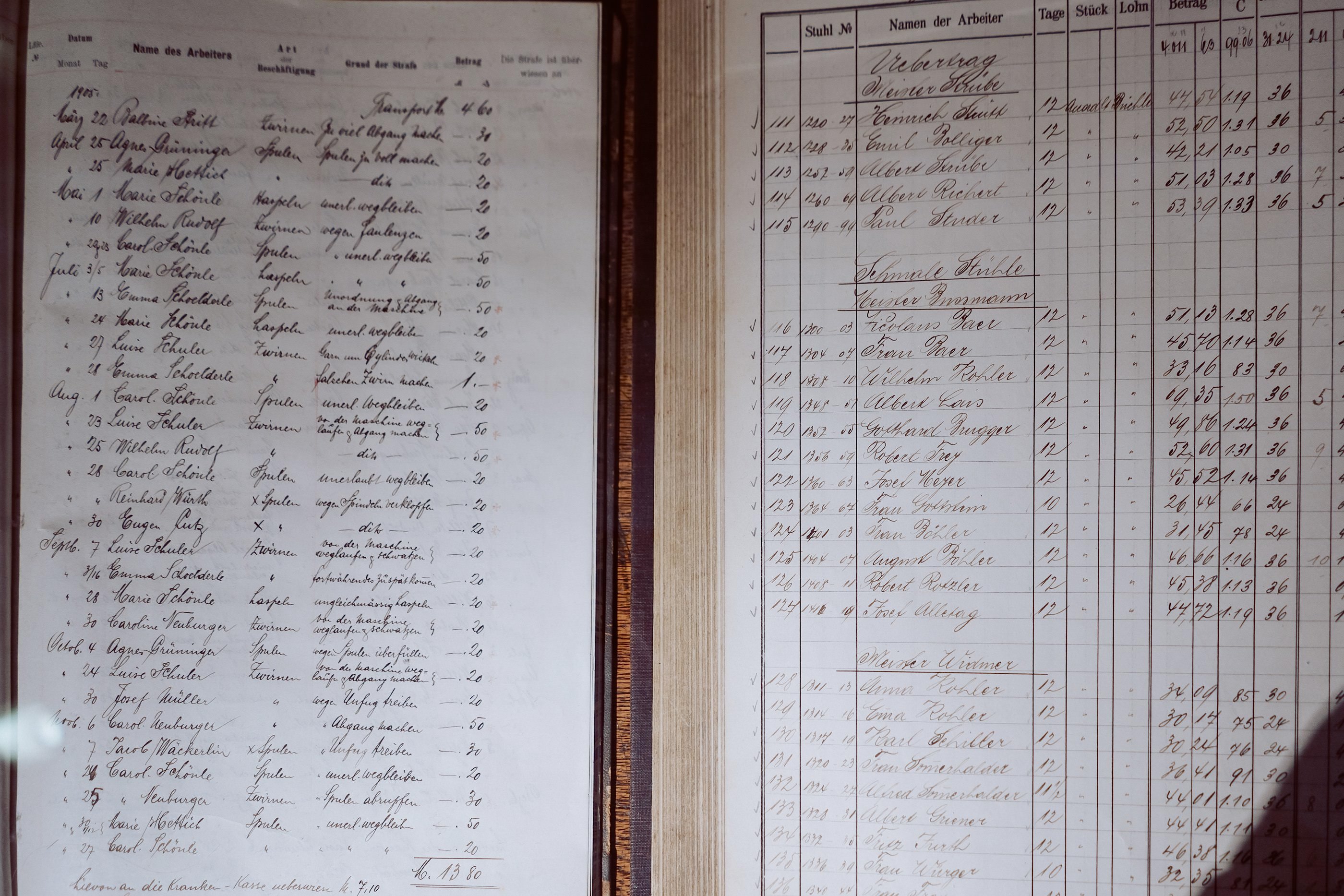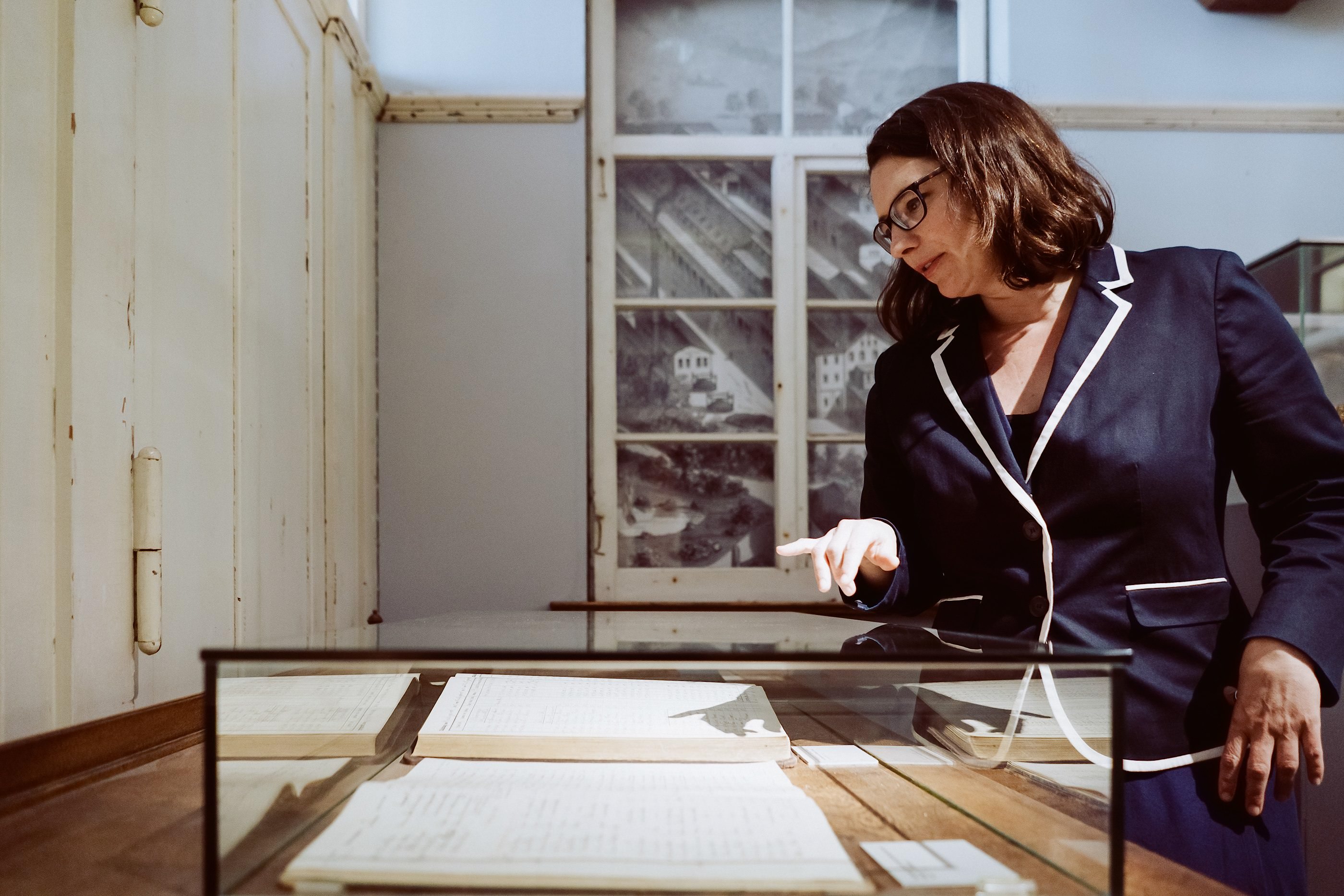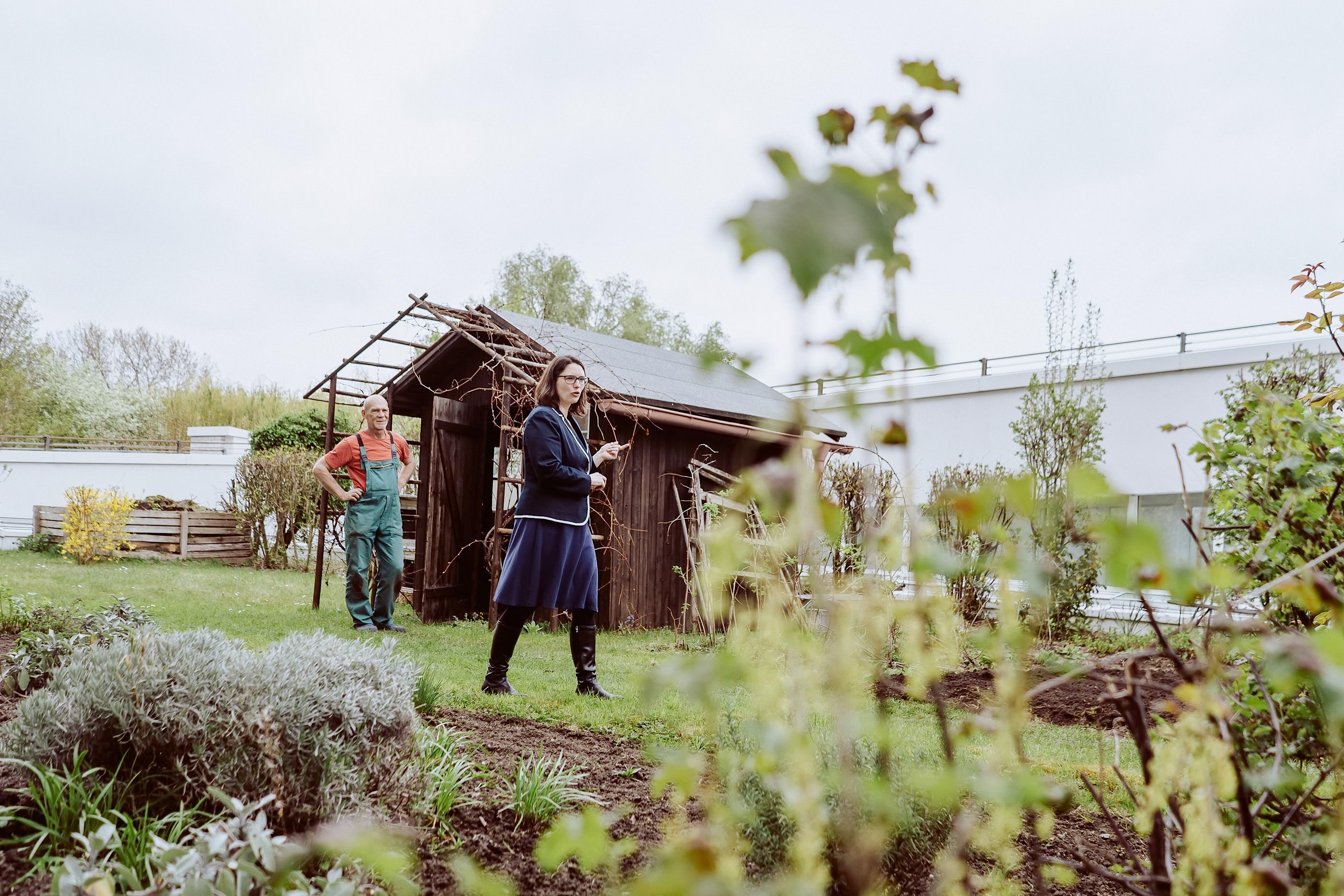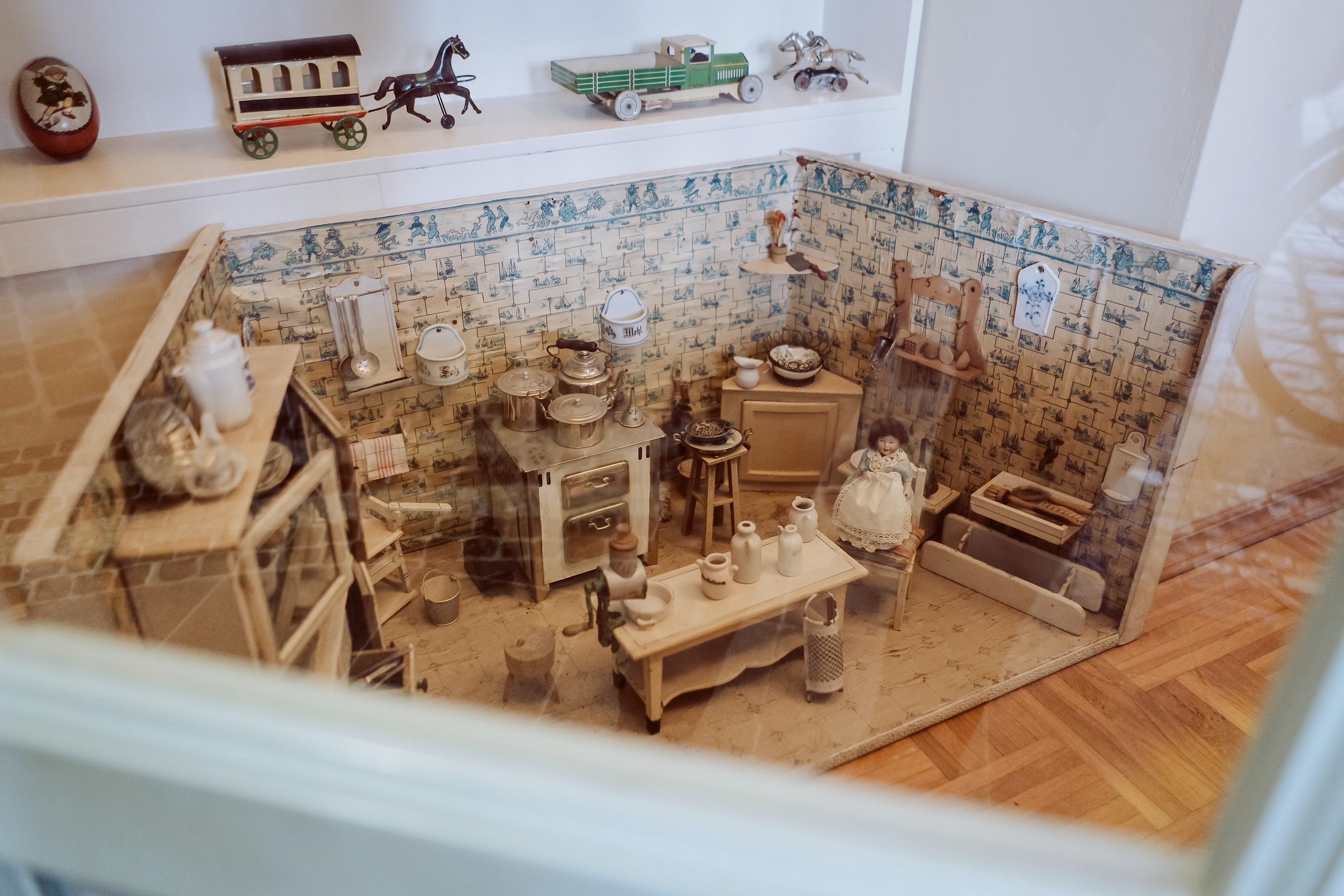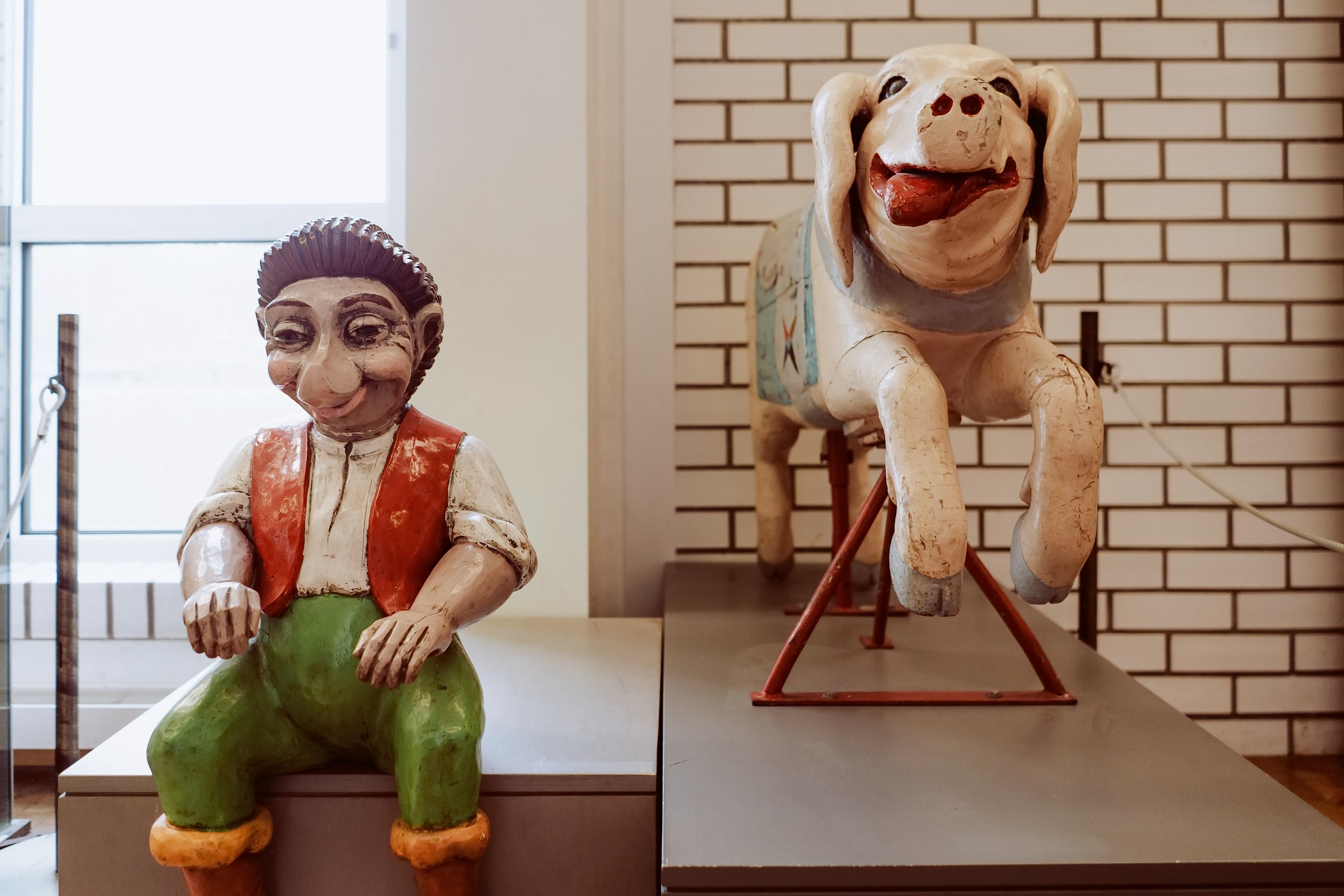In the Mannheim TECHNOSEUM Anne Mahn is in charge of conserving our everyday culture. She especially cherishes the pieces that tell stories of the past, and thus also of our present times as well.
Anne Mahn was baptized on a sewing machine table. “You just fold away the machine, drape a lace dolly over top, and you’re ready to go!” When walking through the TECHNOSEUM there is no need to ask questions, as Anne is so passionate about her job. She is full of delightful anecdotes and facts. Be it about sewing machines, or the grey zinc bath, which touches the ground only in the middle, reminiscent of a giant vase. The bath was constructed as a tiny wave pool, to be rocked back and forth. And the story goes, that Sissi once flooded the Adlon Hotel with such a contraption. This whimsical image might let one forget, that the construction of the bath had very indigenous roots, as the rocking motions allowed one to use less water and reach certain regions of the body more easily to get clean.
Since 2014 Dr. Anne Mahn has been active as a curator for the TECHNOSEUM, the State Museum for Work and Technology. The 9.000 square meter space tells the story of technical and social history, ranging from the 18th century to today. This is the story of industrialization. The interactive exhibition “Elementa” allows visitors to experiment with many different inventions. Anne Mahn is an expert on everyday culture, a field that defines the whole exhibition space. And the focus lies not as much on the big pieces, such as the giant water wheel, which belonged to a paper mill, or the historic printing machines, but more on coffee sets, tobacco boxes and chamber pots. “These are the things our visitors recognize and connect with.” Above all though, Anne Mahn is fascinated by the stories: the history of the pieces, and the memories they can trigger.
While walking through the museum Anne stops to show us the clocks. These heavy wooden boxes, filled with intricate mechanisms, where measuring instruments, introduced to record workers hours. “Timekeeping as control”, she calls this, and shows us some punch cards. These are easily transferred to our modern times, where we use chip cards to log in and off from work. “Or you need mutual confidence,” she adds, and shows an old penal record, with handwritten entries noting the different reasons for deductions: late arrivals, absence or chatting.
